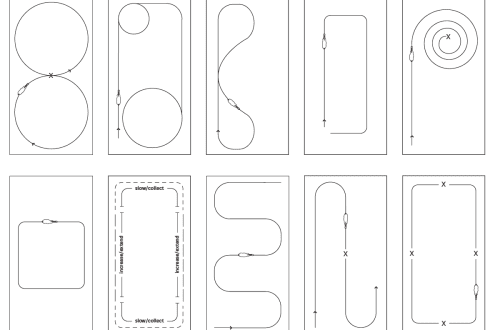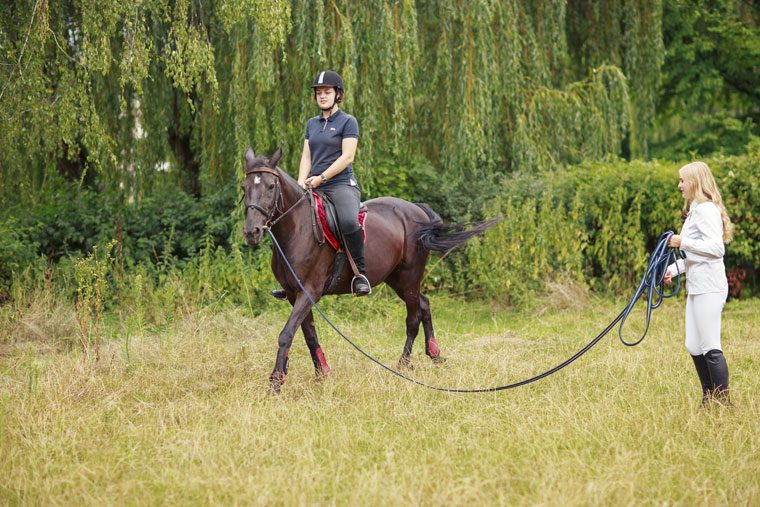
Importance of training on different horses
In his collection «Classical Training»dedicated to the training of horses and exercises for riders, Sarah Warne wrote an article in which dealt with the topic of training on different horses. After all, it is not uncommon when a rider gets used to working only on his horse, and on others he does not succeed.
You can learn a lot about a rider when you get on his horse. Often, when we mount a horse after another athlete, especially if the pair has been formed for a long time, we can determine the riding style and habits of this rider. Horses are like a mirror: they reflect our weaknesses.
Photo: personal archive of Catherine Dufour.
Perhaps everyone at least once sat on the horse of another rider and thought: How does he ride this every day? Why did this question come up? There are many reasons: perhaps you have come across a horse that does not fit into the reins on one side, and you feel as if you are now being pulled out of the saddle; it can be a horse with a stiff back, which makes it feel like you are riding a board that your spine is beating against every pace; there are horses that you send leg forward, ask them to give way on their feet, bend, step aside, and in response, silence. There is a feeling that the horse has a numb body, and it does not hear you, then there is a desire to get off and revive the response to the leg from the ground.
Everyone has seen trainers sit on student horses to help sort out a problem, but more often than not, trainers look at their athletes in bewilderment, trying to understand how they could confuse themselves and the horse in such a way. Dressage is not an easy task, but it happens more because riders confuse horses with their inaccurate actions, and not because of horses that do not look right or are not endowed with enough talent. Nuno Oliveira said that it is possible to teach a horse to make changes even by touching his ears, if he knows how to do them in principle. According to Nuno, a horse can be taught anything if you have a light contact and can influence it without any problems. Light contact with the reins and the ability to influence the horse – it seems nothing complicated, right? Let’s analyze this question.
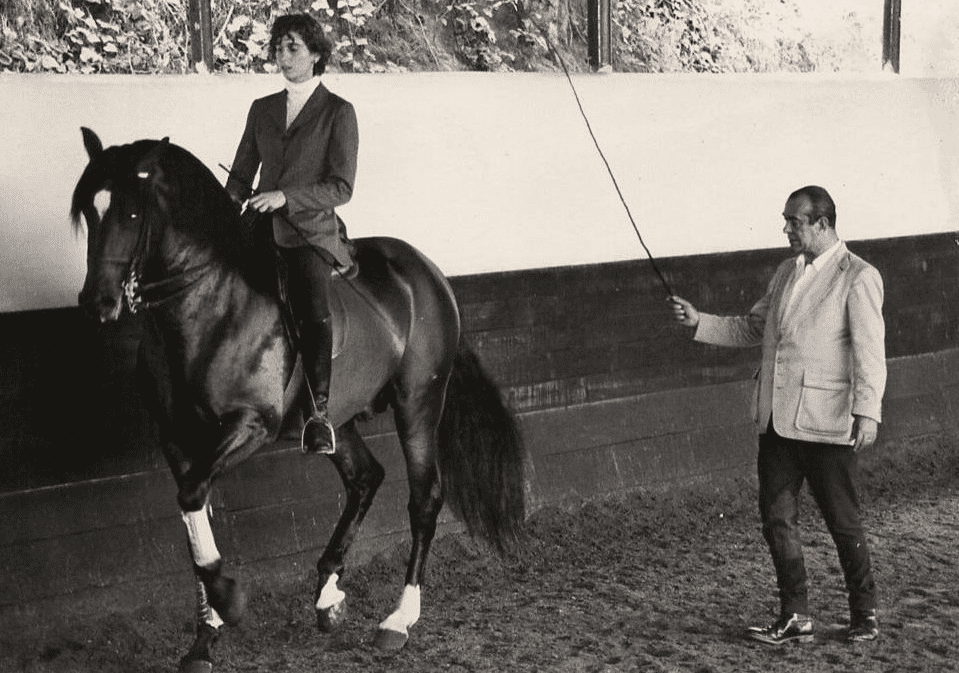
The working process. Nuno Oliveira as coach. Photo: personal archive of Bettina Drummond.
Will you notice the difference if you move even one centimeter to the left while sitting on a horse? What if controls when driving left and right are not identical, and are perceived differently by the horse because your left leg is in a slightly different position than your right, as is your left hip, and shoulder, and basically every part of your body? Therefore, the use of controls in different directions is perceived by the horse differently.
You will not have clear contact with the horse if you are tense today and relaxed tomorrow. How your horse perceives the controls depends on your attitude.
Contact and impact on the horse also depends on the physiological characteristics of the rider: for example, do you have a stronger right arm and leg, and even when the horse rests on the right rein, do you get the impression that he is walking straight?
Have you ever thought about the consequences of shortcomings in work that occur day after day, until the moment when your horse completely stopped bending to one side?
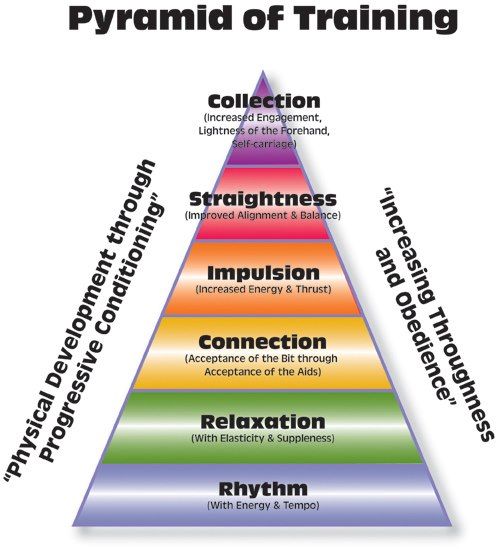 Horse training scale: Rhythm – Relaxation – Contact – Impulse – Straightness – Collection.
Horse training scale: Rhythm – Relaxation – Contact – Impulse – Straightness – Collection.
You will not be able to achieve straightness, stretching the horse’s topline and being able to influence him with easy and relaxed contactas long as there is resistance between rider and horse: the more you pull with your stronger arm or push with your stronger leg, the more the horse will disagree. Even a small imbalance affects the effectiveness of the workout.
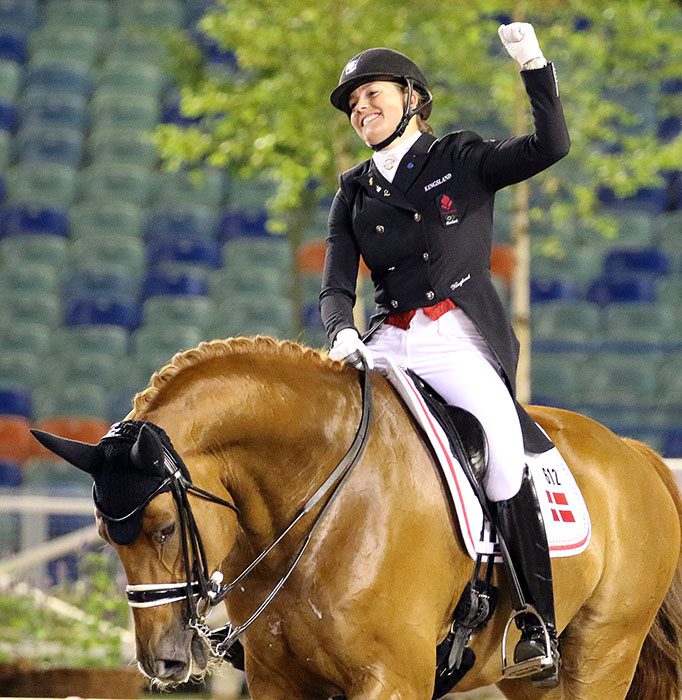
Pictured is Catherine Dufour. A photo: sporthorse-data.com
It is the responsibility of the rider to correct these deficiencies and establish firm contact with the horse and make the aids effective. During work, we control ourselves, adapt to the situation, observe and know if the horse does not understand what is required of him, then he will not obey, and this indicates that the rider is not explaining correctly.
Kira Kirkland believes that training on different horses helps determine the level of the rider and the reaction of the horse to the use of aids.: “I think all horses are different, and each needs to find its own key. Only by trial the rider can figure out what he needs to change or pay attention to.”
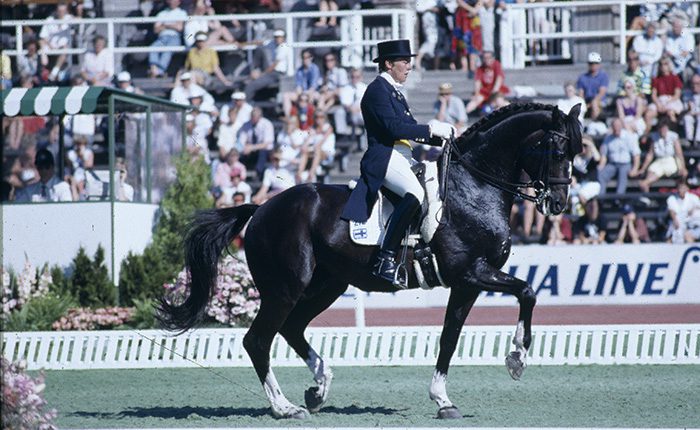
Pictured is Kira Kirkland. Photo: www.horsemagazine.com
If someone mounts your horse, listening to the rider’s comments and feelings can help you find the right approach for him.
Unfortunately, outwardly the horse may seem balanced, but only sitting in the saddle, you will be able to feel whether this is really so. Try to keep an open mind while remaining understanding, not all riders are perfect and often a small mistake can make a big difference!
Source: http://www.eurodressage.com




